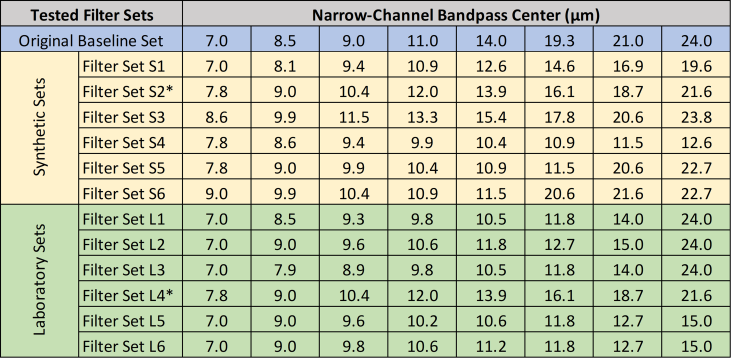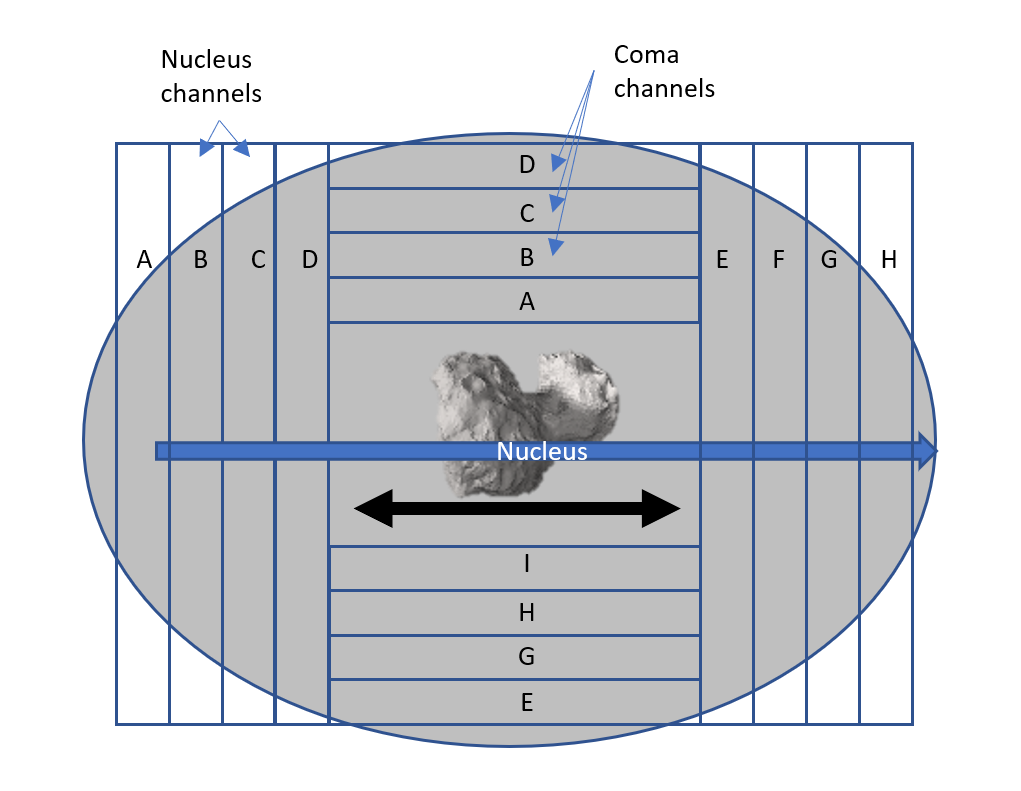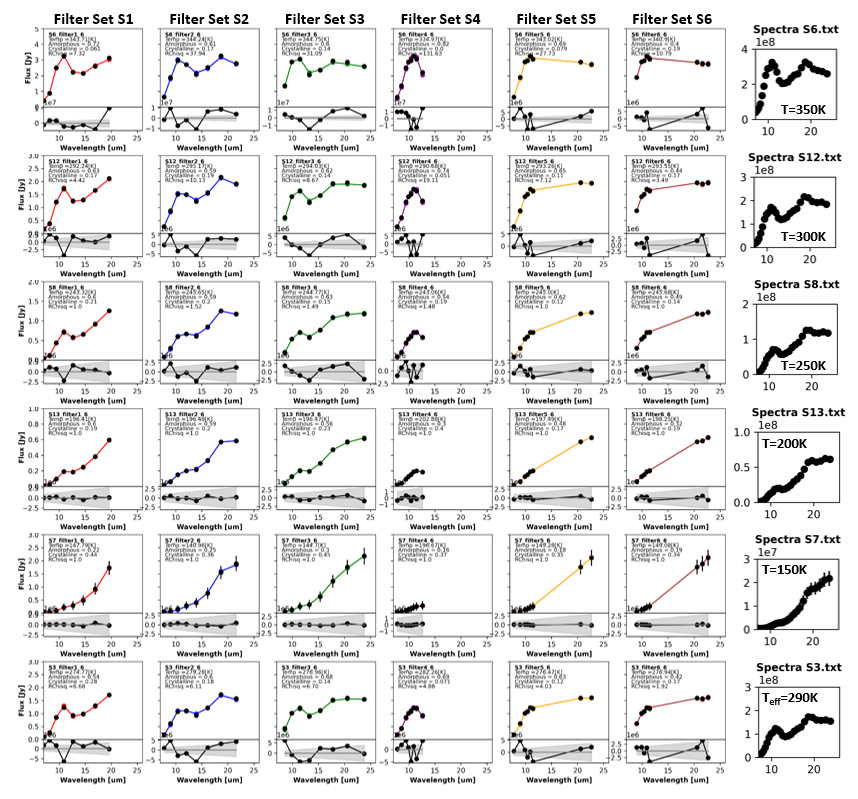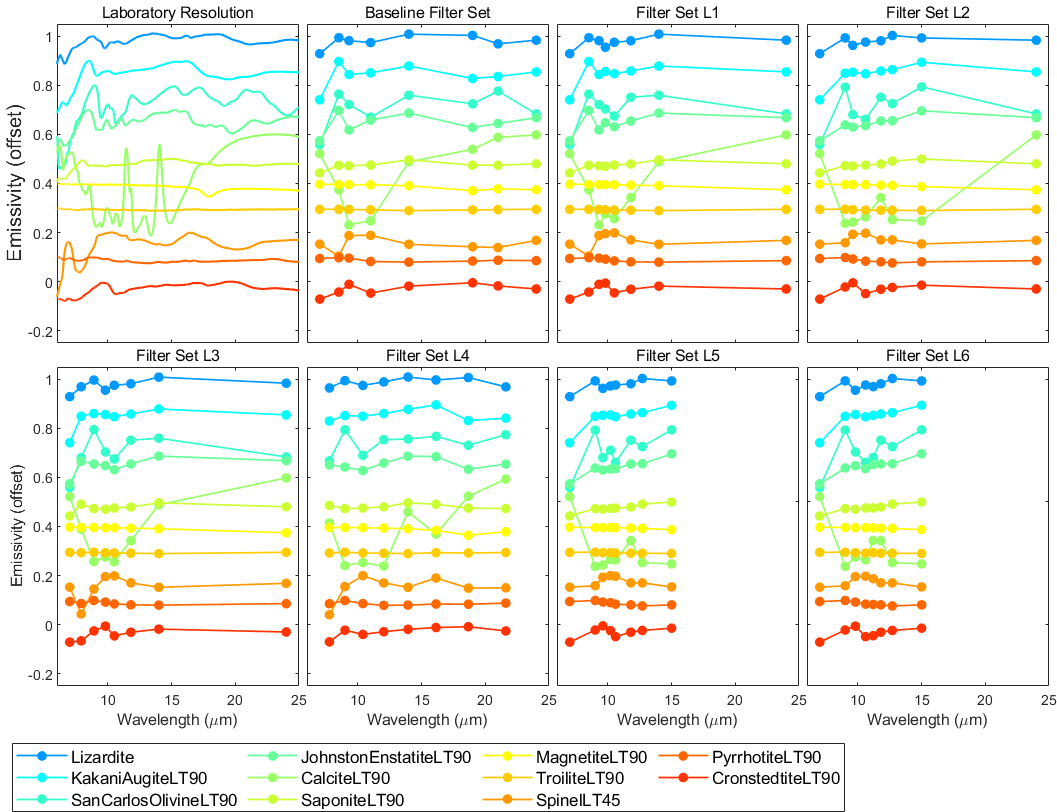- 1AOPP, University of Oxford, Oxford, UK
- 2NASA/GSFC, Greenbelt, MD, USA
- 3SWRI, Boulder, CO, USA
- 4Department of Physics, UCF, Orlando, FL, USA
- 5Department of Geosciences and Geography, University of Helsinki, Finland
- 6VTT Technical Research Centre of Finland Ltd., Espoo, Finland
Introduction: ESA’s upcoming Comet Interceptor (CI) mission will be the first to visit a long period, potentially dynamically new, comet that will consist of some of the most primitive material from the beginning of our Solar System [1]. Part of CI’s payload includes the Modular InfraRed Molecular and Ices Sensor (MIRMIS) which aims to map the thermal and compositional variation of the comet’s nucleus and coma. MIRMIS is compromised of a near-infrared hyperspectral imager (NIR, 0.9-1.6 µm), a mid-infrared point spectrometer (MIR, 2.5 – 5 µm) and, the focus of this study, a multispectral thermal imager (TIRI, 6-25 µm).
TIRI’s instrument design includes one central broadband thermal imaging channel (6-25 µm) and 2 identical sets of eight narrow-band channels situated orthogonal to each other to accommodate the instrument orientation as it changes upon closest approach to the comet (Fig.1). This configuration will allow for optimal comparison between views of the comet, and analysis of photometric effects.
To maximize the science return pertinent to the mission objectives, we investigated TIRI’s ability to retrieve both temperature and composition using its originally proposed filter set, described in Table 1, and new alternative filter sets.

Table 1: Summation of bandpass centers for filter sets. In blue is the original baseline filter set, and those underneath (yellow and green) show proposed filter sets tested for improved science return. Starred set is the proposed ‘new baseline’.

Figure 1 : Filter layout on TIRI
Methods: To optimize TIRI’s narrow-band filter set, we used both synthetic nucleus spectral targets and laboratory measured analogue minerals and meteorite spectra to understand TIRI’s detection capabilities. In addition to the proposed baseline filter set, several others were proposed that consisted of band-centers evenly spaced along TIRI’s range; band-centers concentrated near 9-11 µm (a region rich in silicate features); or a mix of the two.
Synthetic Spectral Analysis: Twelve synthetic spectra were generated with the Planetary Spectrum Generator (PSG) [2]. These included six featureless spectra made of single or mixed temperature blackbodies and six spectral mixtures composed of crystalline (fayalite or enstatite) and amorphous (pyroxene) silicates convolved with single or mixed temperature blackbodies. Mixed temperature blackbodies were used to account for nucleus roughness and/or pixel anisothermality. The silicate endmembers used in this study were chosen based on identified minerals of comets Tempel 1 and Hale-Bopp [3-5]. For these simulations we assumed fixed resolving power to create synthesized spectra with a specific pixel-width that already accounted for TIRI noise performance. Six filter sets were tested as defined in Table 1 (yellow).
The simulated retrievals included realistic instrument noise (noise-equivalent-power) and were performed using the Retrieval Module of the PSG [5]. We used this tool to test the ability of each filter set to retrieve a sequence of information about each original synthetic spectrum: 1) temperature; 2) temperature + amorphous pyroxene; 3) temperature + crystalline fayalite; 4) temperature + crystalline enstatite; 5) temperature + crystalline fayalite and enstatite; and 6) temperature + all three silicates (Fig. 2).
These retrievals showed that temperature of the featureless spectra was always reliably determined independent of filter set. For the silicate spectra, temperature was always retrieved (±1 K) if >250 K, but spectral shape determination, had a dependence on filter set. Filter set S2 (Table 1, Fig.2 blue) was determined to most accurately identify compositional features.

Figure 2. Summary of the final retrieval of temperature and composition (T & three silicates) for the 6 spectra with spectral shape (rows) using the 6 filter sets (columns) defined in Table 1. The last column on the right shows the original high-resolution spectra.
Laboratory Spectral Analysis: We examined laboratory spectra of minerals and meteorites likely to be present/analogous to the anticipated primitive comet. These include minerals used in the OSIRIS-REx collection [6] and carbonaceous meteorites from [7]. From these, we identified several key features for compositional determination generally centered within 8-12 µm (Subset in Table 1).
We included a set of mineral mixtures with known amorphous content from [8] to test the filter set ability to identify crystalline content of the material. Differences were subtle at low amorphous content and unlikely to be captured at this spectral resolution. Another set included hydrated/altered meteorites from [7]. Tested filter sets captured the overall spectral shape of the meteorite composition and including longer wavelengths (12-15 µm region) improved differentiation of hydrous alteration. It was determined that TIRI alone would be unable to quantify surface ice content, but hydration of surface mineralogy may be detectable.

Figure 3. Minerals from the OSIRIS-REx collection [6] and lizardite (unpublished) at laboratory resolution, TIRI baseline, and filter sets defined in Table 1.
Discussion: The synthetic analysis showed that filters covering a large range is necessary to capture both temperature and spectral shape of the target comet. The laboratory analysis showed that, while a concentrated filter set was better at distinguishing minute differences between compositions, a wider range of filters can still provide adequate qualitative spectral information to achieve TIRI’s science objectives. We thus propose shifting to the new filter set that encompasses a slightly smaller range (8-22 µm) to retrieve temperatures and to better capture mid-range compositional features (Table 1, starred set).
Investigations will continue to incorporate a larger range of compositional spectra into the synthetic analysis model to better understand possible instrument performance and further explore the challenges of compositional unmixing for our target comet.
Acknowledgments: We thank the entire Comet Interceptor team for their inputs into this analysis, and the use of online databases including PSG & RELAB.
References: [1] Snodgrass C. et al (2019) Nat Commun 10, 5418. [2] Villanueva G. L. et al., (2018) JQS&RT 217, 86-104. [3] Lisse C. M. et al., (2006) Icarus, 313, 635-640 [4] Lisse C. M. et al., (2007) Icarus, 191(2), 223-240. [5] Lisse C. M. (2008) Icarus 195(2), 941-944. [6] Donaldson Hanna K. L. et al. (2021) JGRP 126(2) [7] Bates H. J. et al. (2021) JGRP 126 [8] Donaldson Hanna K. L. et al. (2018) LPSC 49 #1867
How to cite: Shirley, K., Warren, T., Faggi, S., Villanueva, G., Protopapa, S., Donaldson Hanna, K., Kohut, T., Bowles, N., Nasila, A., and Thirumangalath, S.: Optimizing Filter Bandpass Selection for the Thermal Infrared Imager on ESA’s Comet Interceptor Mission, Europlanet Science Congress 2022, Granada, Spain, 18–23 Sep 2022, EPSC2022-486, https://doi.org/10.5194/epsc2022-486, 2022.

